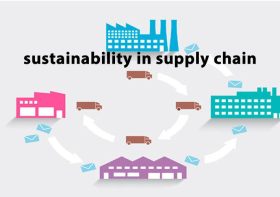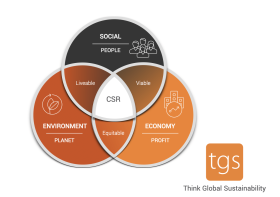Implementing Green Practices in Your Business

In today’s world, where societal focus on environmental sustainability has reached new heights, businesses have a responsibility to adopt and promote green practices. By implementing eco-friendly initiatives, not only can your company contribute to a healthier planet, but also gain advantages such as cost savings, improved brand image, and increased customer loyalty.
1. Understanding the Importance of Green Practices
Before diving into the implementation process, it’s crucial to recognize the environmental challenges we face and why green practices are essential. Climate change, pollution, and depletion of natural resources are significant concerns affecting us all. By aligning your business with sustainable practices, you take a proactive stance in addressing these issues, reducing your carbon footprint, and preserving resources for future generations.
2. Developing a Green Policy
A green policy serves as a foundation for your business’s environmental initiatives. Start by assessing your current practices and identifying areas for improvement. Set specific goals for reducing waste, energy consumption, and water usage. Encourage employee involvement by hosting brainstorming sessions to gather ideas and develop a sense of collective responsibility towards sustainability.
3. Energy Efficiency
Reducing energy consumption not only benefits the environment but also results in significant cost savings. Switching to energy-efficient lighting, using smart thermostats, and installing motion sensor lights are some simple yet effective ways to conserve energy. Encourage employees to power down computers and other electronics when not in use and leverage power management settings to automatically reduce energy consumption.
4. Waste Minimization and Recycling
Implementing a comprehensive waste management and recycling program is crucial in reducing the environmental impact of your business. Start by conducting a waste audit to identify areas that generate the most waste. Consider alternatives to single-use items and encourage the use of reusable materials. Implement recycling bins for paper, plastic, glass, and other recyclable materials throughout your workplace, making it easy for employees to participate.
5. Sustainable Procurement
When selecting suppliers and vendors, opt for those who share your commitment to sustainability. By partnering with green-certified companies, you ensure that your procurement process aligns with your eco-friendly goals. Prioritize suppliers that offer environmentally friendly products, packaging, and practices. This not only reduces your carbon footprint but also supports the growth of sustainable businesses.
6. Transportation and Travel
Transportation and travel contribute significantly to greenhouse gas emissions. Encourage carpooling or provide incentives for employees using public transportation. Offer remote work options or flexible schedules to minimize daily commuting. Encourage the use of video conferencing and telecommunication tools to cut down on business travel whenever possible.
7. Green Office Practices
Small changes in daily office practices can collectively have a substantial impact on the environment. Encourage double-sided printing and ensure recycling bins are easily accessible throughout the office. Optimize the use of natural light by rearranging workspaces and investing in energy-efficient windows and skylights. Consider indoor plants to improve air quality and introduce a greener ambiance.
8. Educating and Engaging Employees
Engaging employees in your green initiatives is crucial for successful implementation. Regularly communicate your sustainability goals, progress, and success stories. Organize training programs to educate employees about the importance of sustainable practices and provide them with useful tips for integrating eco-friendly habits into their daily routines.
9. Monitoring and Reporting
Regularly monitor and measure the success of your green initiatives. Implement data tracking systems to review energy usage, waste generation, and water consumption. Set up key performance indicators (KPIs) related to sustainability goals and analyze the data to identify areas for further improvement. Be transparent and share the results with stakeholders, customers, and employees, showcasing your commitment to a greener future.
10. Collaboration and Partnerships
Collaborate with like-minded businesses, organizations, and local communities to amplify your green impact. Participate in environmental initiatives and sponsor local conservation projects. By working together, you can create a collective force that embraces sustainable practices and inspires change on a broader scale.
Implementing green practices in your business is not only a moral obligation but also a strategic advantage. By reducing your ecological footprint and demonstrating your commitment to the environment, you can attract eco-conscious customers, boost employee morale, and drive long-term success. Embrace sustainability, make a difference, and lead the way to a greener future.


